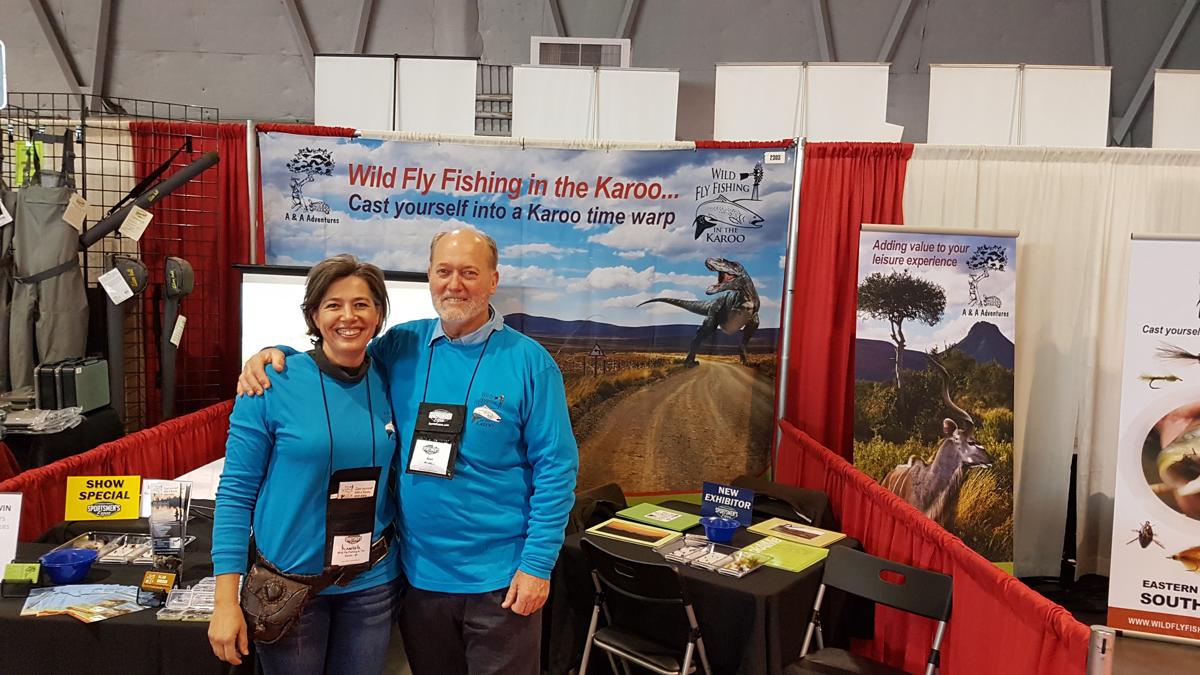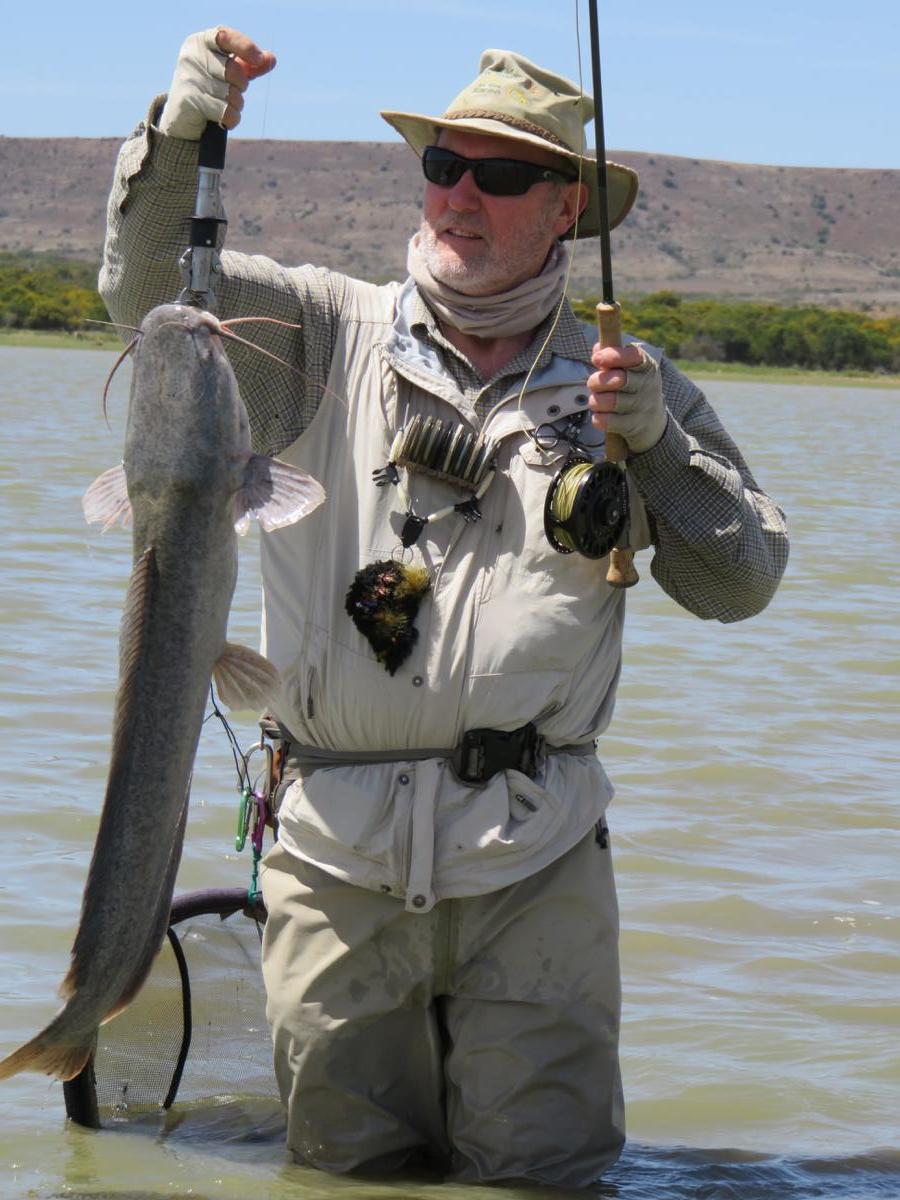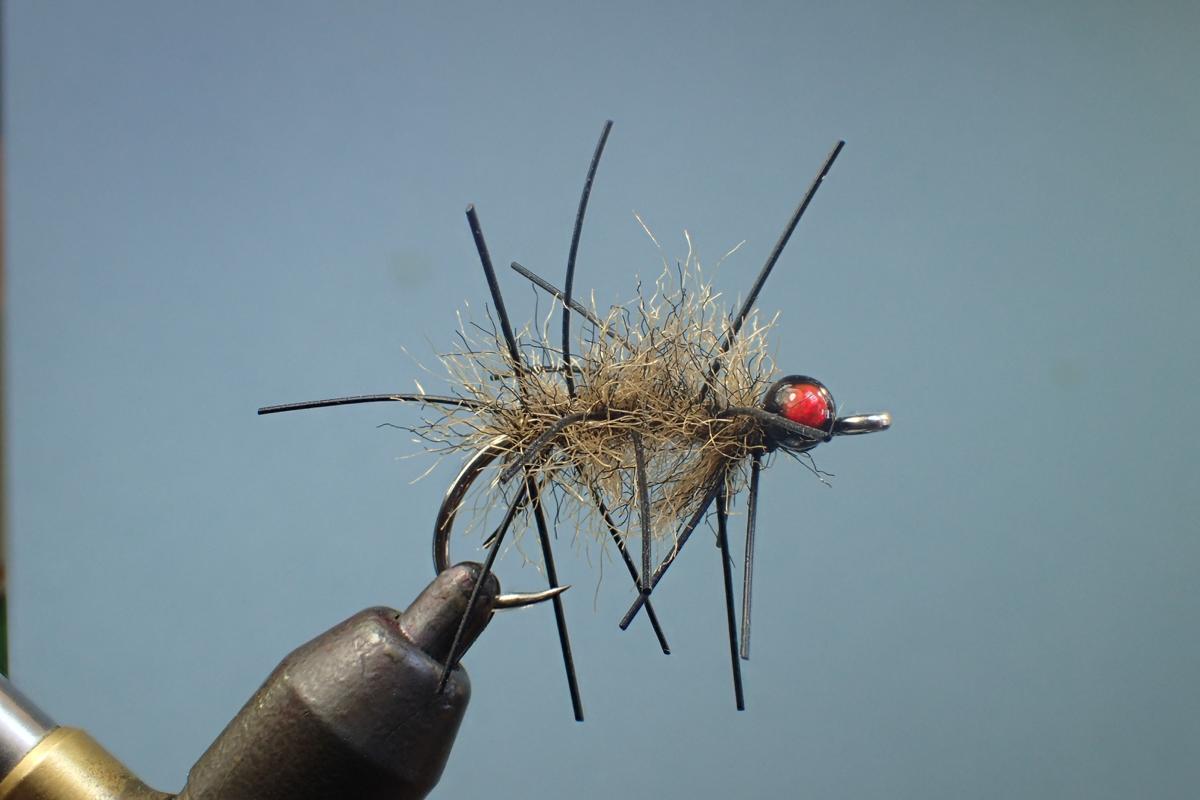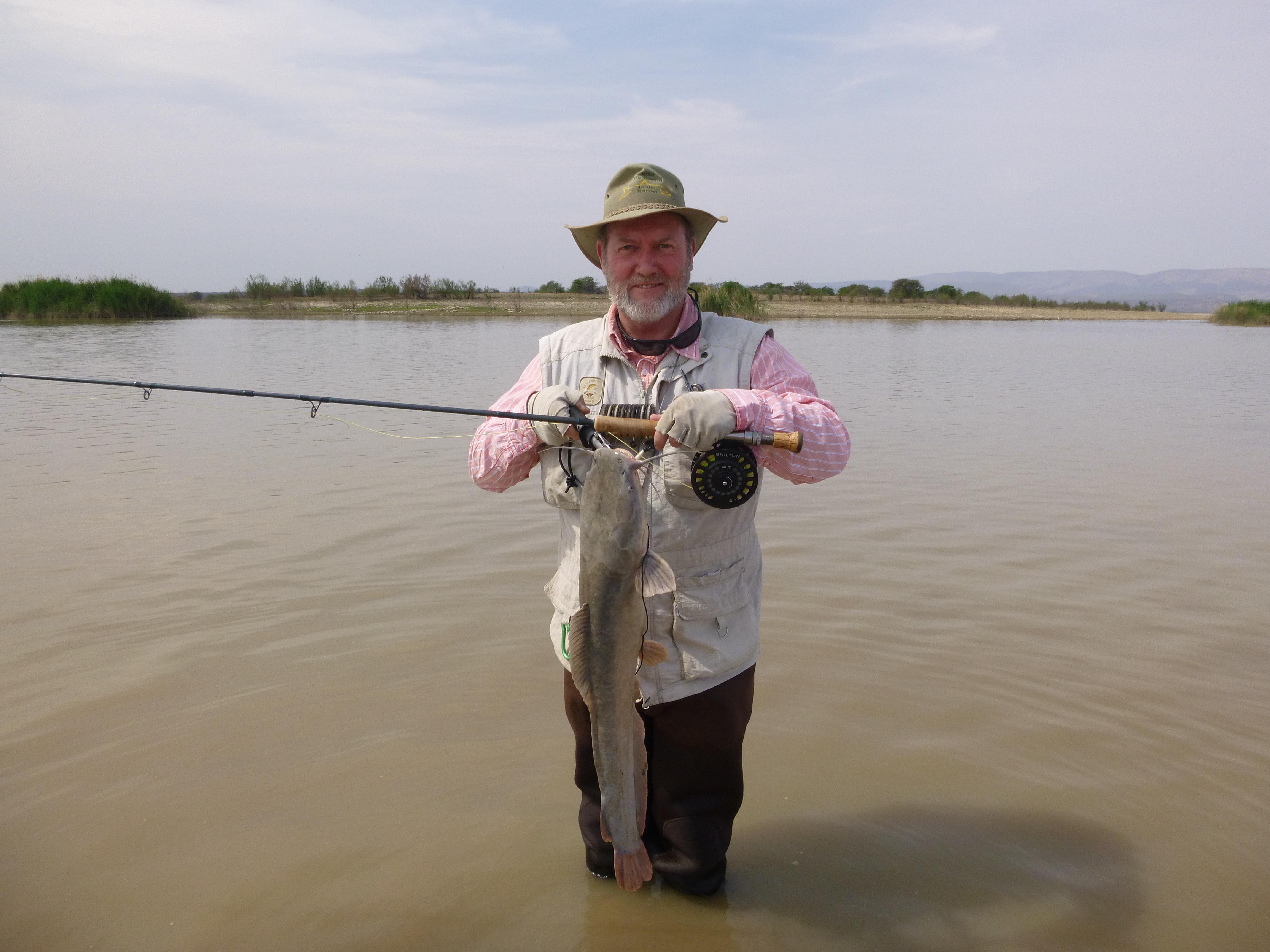
5 minute read
Barbel and the Rubber Hackle Crab - Ed Herbst
Barbel and the Rubber Hackle crab
Ed Herbst
Advertisement
When Alan and Annabelle Hobson visited some outdoor tourism shows in the USA recently to promote their Wild Fly Fishing in the Karoo business they found, somewhat to their surprise, that the Americans were most fascinated by sight fishing to barbel illustrated in this video clip which was taken fishing on dams in the Karoo and near Somerset East.
Promoting fly fishing in the Karoo – Alan and Annabelle Hobson in the USA
Alan says Americans are fascinated by big freshwater predators such as Northern pike and muskies.
In Europe it is the Welz catfish that fills this role and I enjoyed this article about Neil Patterson fishing big streamers for this predator in the middle of Florence. hook a barbel of about 10 kg on a beetle pattern in a shallow inlet furrow to the Darlington Dam near the town.
Alan has located some superb barbel dams linked to dairy farms near the town.
The milking sheds on these farms have to maintain high standards of hygiene and so they are hosed down each day.

The water from these sheds is then filtered through wetlands before running into the dams. This nutrient-rich water creates an ideal environment for a plethora of aquatic organisms and the barbel quickly reach the 10kg mark and more.
Alan fishes 9-weight rods equipped with the Shilton SL7 reel and 200 metres of gel-spun backing for these fish.
Alan Hobson applying pressure to a big Karoo barbel

Barbel have poor eyesight and rely on their ability to pick up vibrations in the water to locate their prey.
The artlure anglers that target big barbel on dams like Vanderkloof and Gariep use a Rapala Shad Rap fished below a Marlin teaser lure. To mimic this on a fly rod, Alan uses a small popper strung between two micro rings as the attractor and, on the point, he uses a lightly weighted fly which must be easy to cast and easily seen and sensed by the barbel.

Crabs are a staple in the diet of trout, bass, barbel and yellowfish in the area and my sense is that the ideal material for such a pattern is the Fishient 0.5” Lively Legs Crustacean Brush in Bronze Back and Black for clear water and Bronze Back and Tan for turbid water.
Hold this material against the light and the tan and black synthetic core almost glows and the thin, rubber legs wiggle at the slightest movement.
We are indeed lucky that we have Cliff Rochester developing materials like this in his Scottburgh factory because, with coronavirus Rand running at 19 to the Dollar at the time of writing, it helps if you don’t have to pay overseas transport costs to import fly tying material.
I use a straight-eye #6 Ahrex SA 250 Shrimp hook but a Grip bass fly hook such as the 30012 is substantially cheaper.

Bead chain on top of the hook helps flip the fly into a hook point up-position without weighting the fly too heavily – crabs are shallow-water creatures.

Another alternative would be the plastic bead chain which is sold in Venetian blind shops with a piece of flat lead in top of the hook shank to turn the fly the fly over.
With the success of the Red Eye Damsel in mind, I cover the bead chain with Solarez Bone Dry Black UV resin and I then use Solarez Fluo Red resin mixed with red glitter dust to make the fly easier to spot in turbid water.
After that the Crustacean Brush is tied in at the hook bend and wound forward to the eyes where it is tied off. Leave about a millimetres of space between the wraps so that you don’t trap and legs and stroke them back as you wind the brush onto the hook shank.

You could add even more movement by adding a tail of zonker strip fur or another soft and mobile material like marabou to make a super-wiggly Woolly Bugger
I then trim out any rubber strands that are touching one another and would be prone to mat together.
For deep, fast water such as the Orange River in the Richtersveld, one could use lead or tungsten dumbbell eyes.
About 20 years ago, I attended a fly fishing function in Maclear where the late Dr Douglas Hey was the guest speaker.
As a child he was taken along on fishing trips to the newly-stocked rivers in the area by his father, Sydney, author of Rapture of the River.
His task was to clean the trout caught by his father and his friends. He told me that
The author’s crab pattern for turbid water
I am hoping that Cliff Rochester will make a quarter-inch Crustacean Brush to enable even smaller crab patterns to be tied because crabs are prolific in small streams in the Western and Eastern Cape.
Juvenile crabs are small when they are born – about the size of a match head – and they go through several moults before reaching maturity. They are predated upon through all these stages and a quarter-inch brush would enable imitations to be tied which would be easy to cast on 0-3 weight rods.
With the coronavirus making recreational overseas travel almost impossible, it makes sense to explore our own fishing possibilities more extensively and Somerset East provides excellent fishing for trout, bass, yellowfish and barbel within an hours’ drive of the town.












